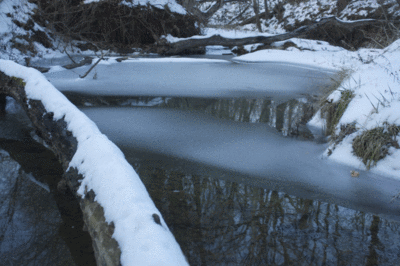
Cloudy ice on the creek after our February snowstorm.
Middle and High School … from a Montessori Point of View

Cloudy ice on the creek after our February snowstorm.
For ten years after discovering penicillin, Fleming and his contemporaries could not get the penicillium mold to grow fast enough for mass production. Finally, in 1942, scientists isolated a strain of the mold from a piece of moldy cantaloupe in a garbage can.
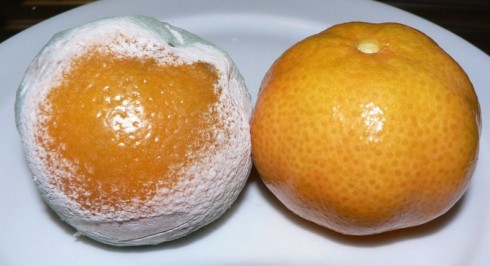
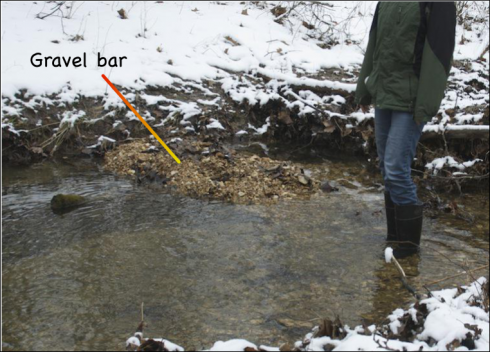
In addition to clearing out the leaves, the fast flow in the creek created some interesting fluvial features. Example number one is this curious gravel bar that was not there a week ago. The gravel is quite coarse — 2-4 cm in diameter — but it’s extremely loose, which is typically of recently deposited sediment.
It seems likely that the sediment comes from beneath the fallen tree that cuts across the creek just upstream of the gravel bar. The tree restricts the stream flow, forcing the water to speed up, and when the water found it’s way through by cutting under the tree, it had enough energy to excavate a hole under the tree and deposit the resulting sediment just a meter or so away.
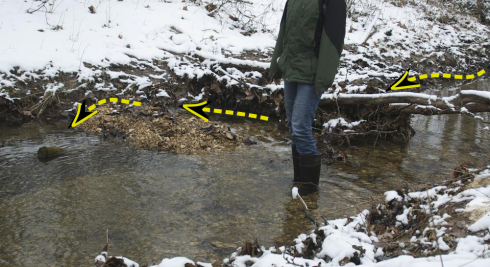
It’s a neat piece of fluvial geomorphology.
Charged electromagnetic particles from the solar wind interact to create sound in space.
You can also listen at radio-astronomy.net.
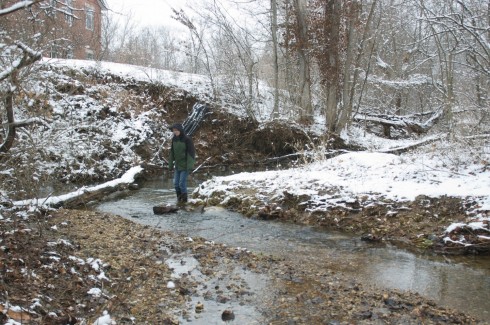
The rapid, snow-melt driven, flow in the creek has receded a little, but it managed to clear out most of the dead leaves that have carpeted the stream bed since the fall. Now that the rocky bottom is exposed, hopefully, we’ll be able to see some more of the benthic fauna that’s been invisible for the last few months.
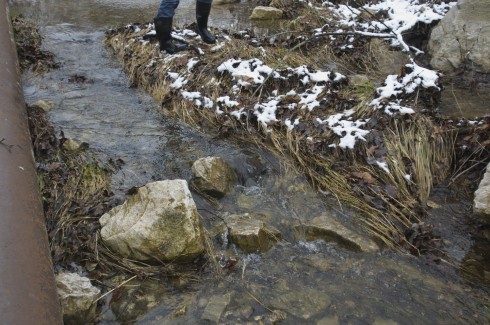
NASA’s Heliophysics (physics of the sun) website has an excellent collection of videos that would link quite nicely with physics discussions of the physics of light (electromagnetism) and the Earth’s magnetic field (as well as the action of charged particles in a magnetic field.
They also have awesome solar videos, like this one of coronal rain.
Natural phenomena like this are great for students to analyze because they require the integration of multiple concepts to explain.
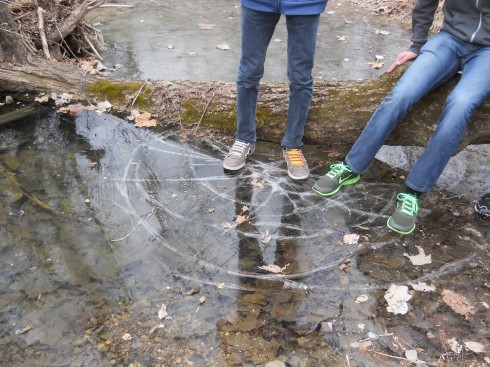
In January, the creek froze over after a few days of below zero (Celcius) temperatures. However, we’d missed the snow that usually accompanies a drop in temperature (it had hit to the south of us), so the ice froze clear and firm. Since they’re used to seeing the whiter ice — on lakes and ice rinks, for example — my students wondered why the ice was so clear.
In February, we got both the snow and cold, which incorporated air bubbles into the ice, resulting in a very different, cloudier ice.
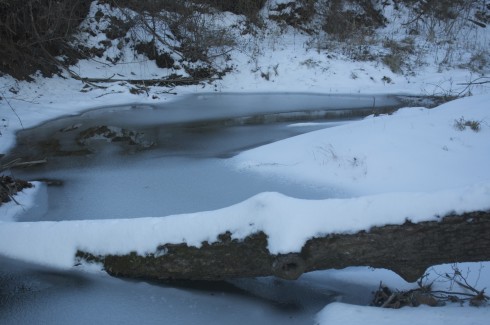
It was quite neat to see the contrast, and made me wonder about the ecological impact. After all, clear ice lets sunlight through much more efficiently than cloudy ice.
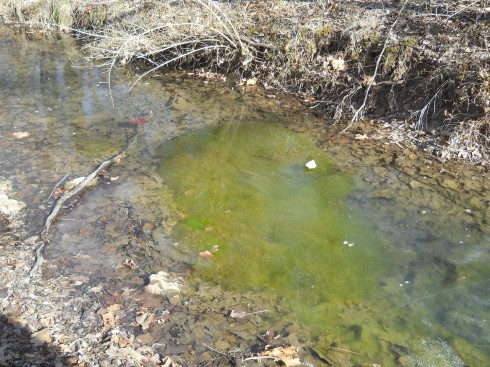
While not quite as dramatic as drilling through four kilometers of ice to find signs of live in an Antarctic lake that’s been isolated from the rest of the world for over 100,000 years, we observed filamentous algae blooming under the clear ice on the creek earlier this winter.
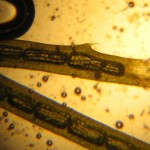
I collected some of the algae and put it into the fish tank; I was hoping I could use it when we looked at plant cells because aquatic plants tend to have larger cells that are easier to see under the microscope.
However, one of my students is keeping tadpoles (also from the creek) in the fish tank. She noticed that the tadpoles were hanging out on top of the algae, and the algae was disappearing. Well, at least we’d solved her problem about what to feed the tadpoles.
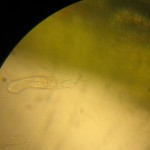
While the filamentous algae might not be as good as the Egeria densa for plant-cell microscopy, it does host quite a number of other microbes that are fascinating to look at.
Based on these observations, ecologically the filamentous algae does not just provide habitat for protists and other microbes, it also appears to be a significant source of food for larger animals, like the tadpoles, and probably also the small fish that live in the creek.
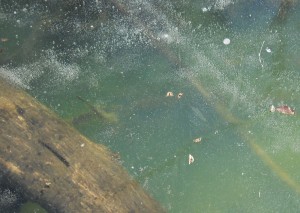
Therefore, I’d hypothesize that in the winter, when the fish disappear, and most of animal life is quite subdued, the algae blooms because it’s not being grazed on nearly as much (see the picture above). When the weather warms, however, it’s the turn of the algae to repressed.
It would be interesting to have a student monitor the algae growth, and the fish/tadpole population, over the course of the school year to see if the relationship is more than just coincidence.
P.S. After our last snowfall, the melting snow has put a lot of water into the creek, and all the algae appears to have been washed away.